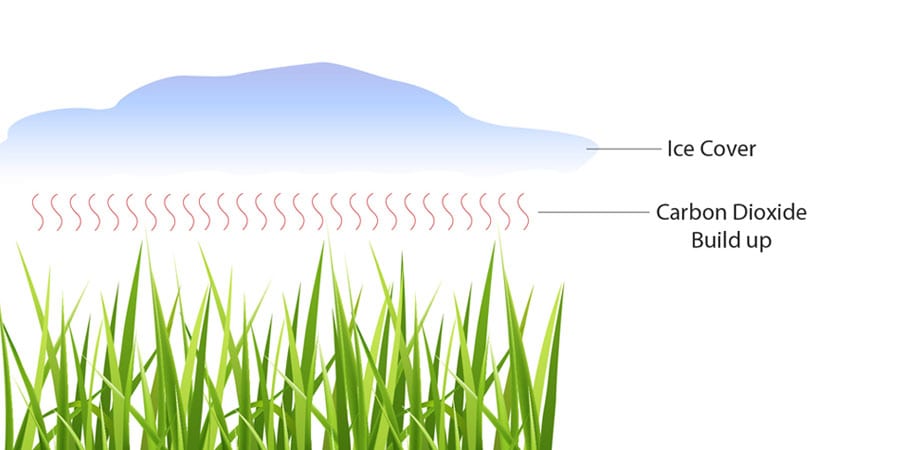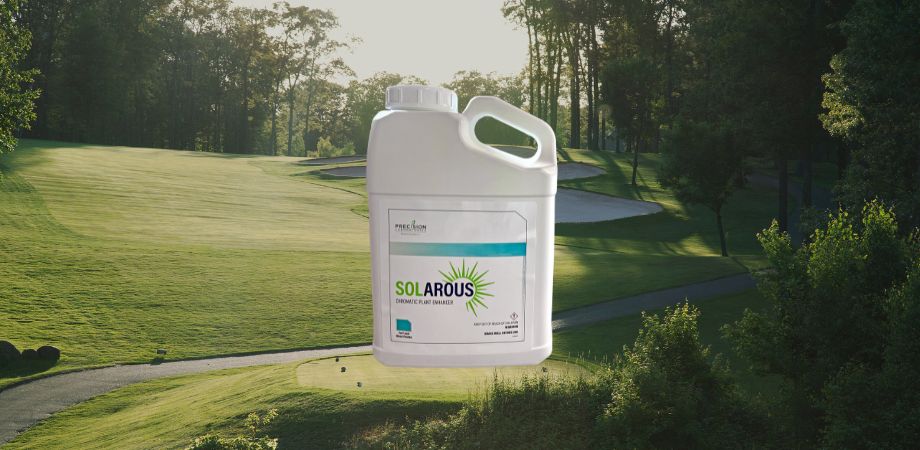Prolonged ice accumulation on turfgrass can lead to fatal levels of carbon dioxide.
Underneath a sheet of non-porous ice, turf will begin respiring and building up gases. The ice cover produces an impermeable barrier, eventually trapping high levels of carbon dioxide and decreasing the levels of oxygen for the plant. Especially for Poa annua, if ice coverage is prolonged (30+ days), the buildup of carbon dioxide becomes too high for some plants to survive.
Porous ice, on the other hand, is cloudy, and this helps block the infiltration of sunlight. Without sunlight, gases build up less.
How can we prevent deadly levels of carbon dioxide and ice accumulation? Avoiding prolonged, non-porous buildup of ice sheeting is an excellent place to begin.
If you have non-porous sheets of ice to deal with, you may need to remove them. Melting is the best way to remove ice without damaging turf. Multiple materials can assist in melting ice: black sand, dark, organic fertilizers and even sunflower seeds.
Turf damage discovered after the ice melts, especially on greens, may require aggressive tactics for a quick recovery. Some of these tactics include increasing fertility, completing high amounts of overseeding, and raising the canopy/soil temperature to promote germination and growth. Environmental conditions frequently make it impossible to begin seeding in early spring, in which case sodding could be the only option.












